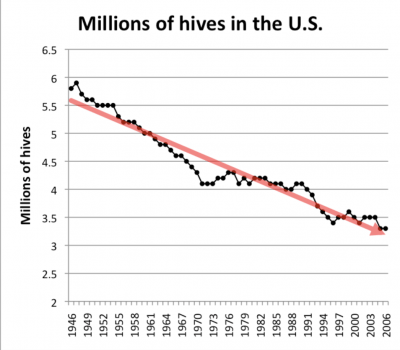Bees have been endangered for decades now, and the chart above depicts just how much the number of bee hives in the Unites States has declined since the mid 1900s. What is still in question is the roots of the bee population problem. Some scientists are questioning whether global climate change has anything to do with the endangerment. The article I read talked about how much the bees were affected by this problem. “Climate change can influence consumer populations both directly, by affecting survival and reproduction, and indirectly, by altering resources. However, little is known about the relative importance of direct and indirect effects, particularly for species important to ecosystem functioning, like pollinators.” Although some research shows that it does in fact have to do with climate change, the direct foundations are still uncertain. Based on this chart, I decided to calculate a the percentage change to get a more accurate percentage on just how much the population of bees has changed.
The percent change from 2000 to 2006 is about 6%.



